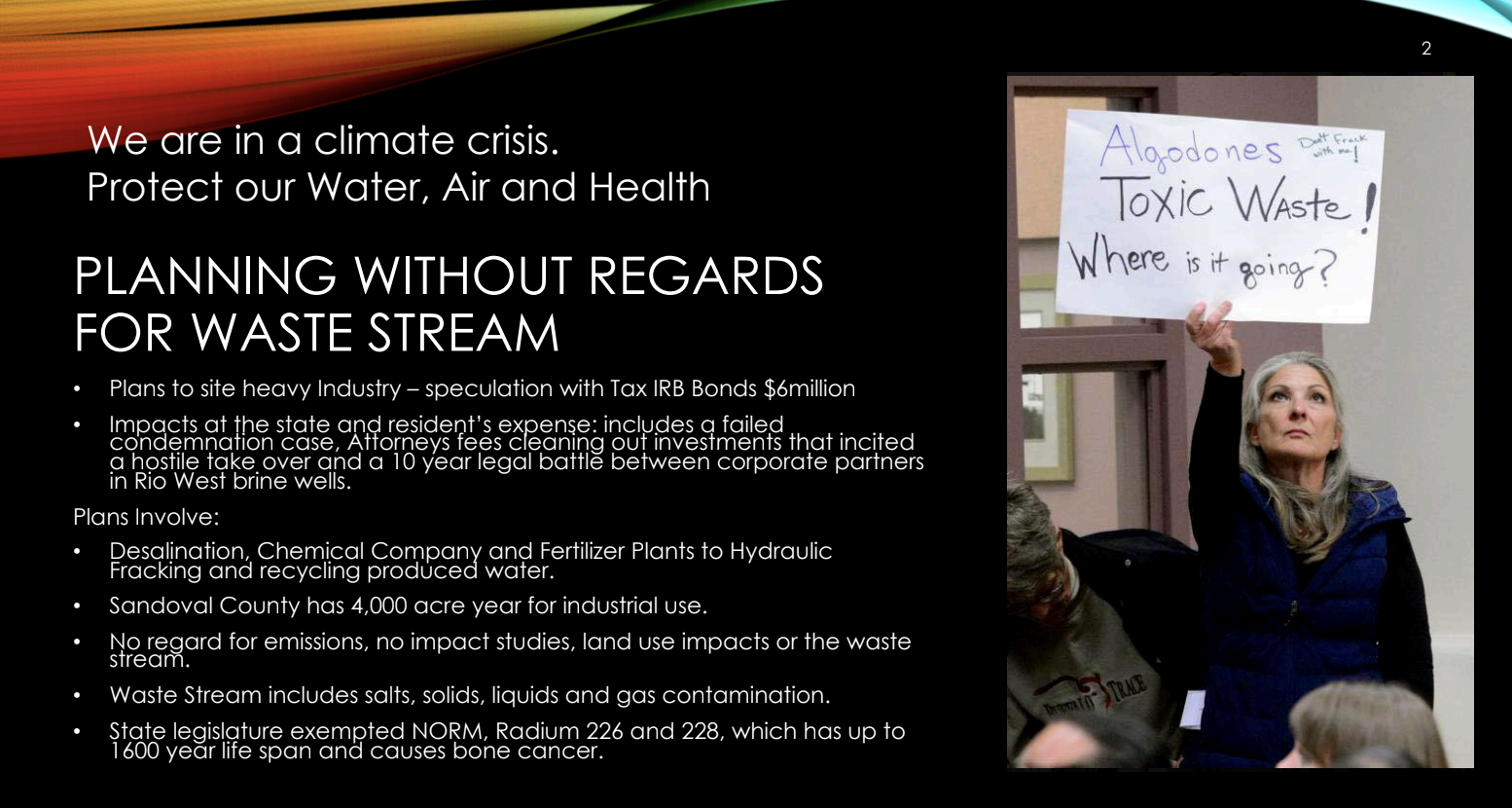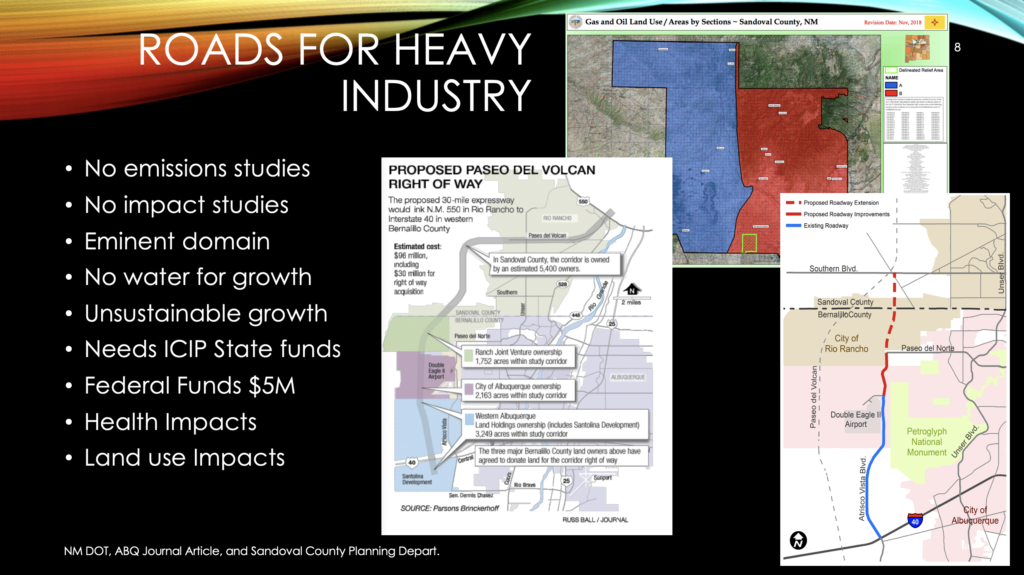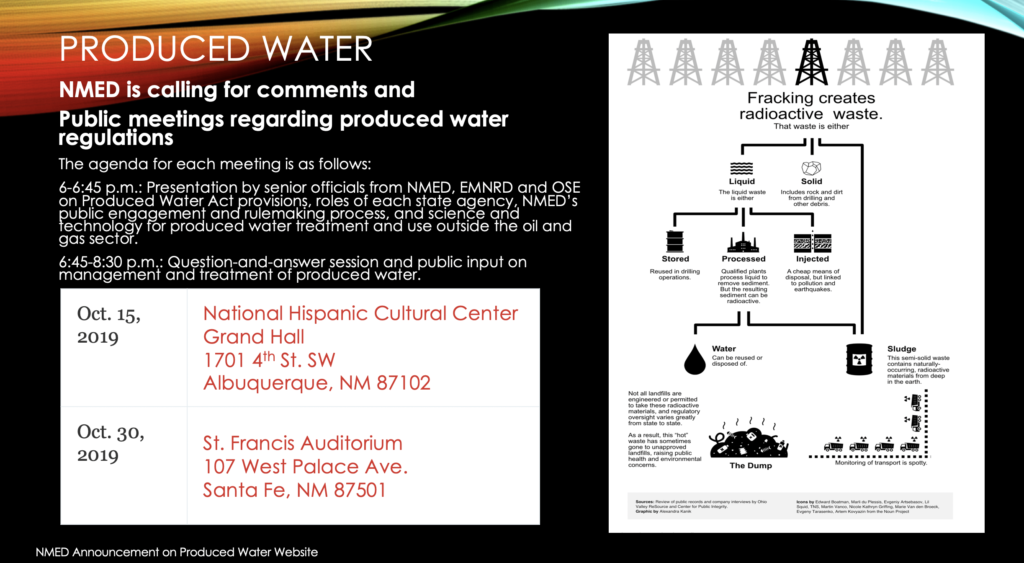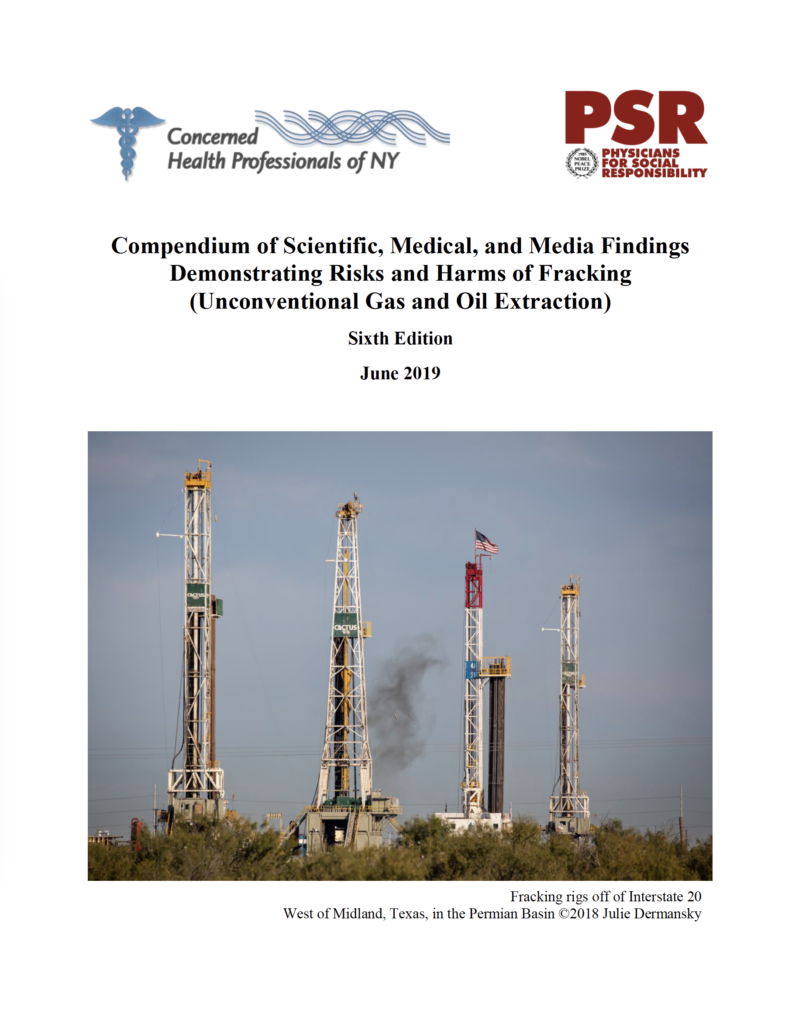BRINE, Radioactive NORM & PRODUCED WATER
Community Meeting September 30th, 2019 at Loma Colorado Library at 6 pm in the Auditorium
We are updating the community on what is transpiring with lands and its impacts on the residents and businesses in Rio Rancho North west Albuquerque and Bernalillo and Sandoval Counties.
Eddie Paulsgrove, stakeholder resident of Rio Rancho will give a presentation on radium issues on the wells. Elaine Cimino. will give overview and what frontline stockholders being affected by the infrackstructure can do.

Infrastructure Development Continues for Unsustainable Growth including Fracking Operations in
Rio Rancho Estates, West Mesa, and impacting the
Albuquerque Middle Rio Grande Basin
Brine Well Water in Rio West spreading NORM and other contaminants

BRINE WELLS have Radium 226 and 228 with high alpha and gamma. Brine water was used on roads for dust control with permission from NMED and who GWB chief has conflicts of interest and use to work for contractors on brine. Brine, if approved by permit by the office of the state engineer, would allow this brine to be used on public lands decimating the watersheds on the the Rio Puerco and Middle Rio Grande. NMED Approves permits for Water discharge and would responsible to regulate brine and produced water in the State.


PRODUCED WATER
Produced water may contain crude oil or condensate and may accumulate a layer of oil on its surface; the oil is flammable and may contain benzene which is a carcinogen. Produced water is a term used in the oil industry to describe water that is produced as a byproduct along with the oil and gas. Sometimes it is called Flowback. It is only 1/3 of the water used that flows back out of the ground. It is Know to be 3600x’s the radium levels according to the Compendiume 6 peer reviewed Studies published.

Fracking needing 30 to 40 times more water upfront is not just a difference volume, it is a fundamental difference in kind. Until recently, operators could usually get all their water from a single surface-use agreement. But most surface owners just can’t supply that much water in that much time, so operators now have to search the whole area for supplies.
We are only talking about ⅓ of produced water recovery prior to separating contaminants that are mostly regulated by RCRA but Preempted including natural and man-made radionuclides and a very expensive water recovery process.

https://drive.google.com/file/d/0B_0oj2x3l5XuQjRYRG0xX2d5d3NHRXVRNVJseHJSOXFkSTNR/view
Peered Review studies can be found in the Compendium 6
Underlying the draft white paper is the expectation of continued oil and gas drilling and fracking to maximize New Mexico oil and gas production and throughput, including for export. This expectation sets current policy and is baked into the white paper promoting commodifying oil and gas wastewater for dispensation through farms (in lieu of dispensing of the liquid wastes by underground injections, known for causing earthquakes). Will you allow NM chili to be forever branded as toxic because this is where we are headed without a moratorium on produced water.
The expectation stems from billions of dollars in debt created on projects to increase the rates of Permian oil (and gas) extraction, paid back over the course of maximal production. Thus the federal and state draft white paper on the market potential of oil and gas wastewater runs from a deep denial of climate constraints on public policy.
It doesn’t consider the emissions of the supply chain and any projects moving forward must include emissions of the entire supply chain.

And currently MRCOG is considering accelerating the use of produced water for Return Flow Credit Dumping into the Rio Grande and Direct injection into the Aquifer. This is being done without Public awareness and study of all the factors, Yet Water brokers in ABQ and AZ are chomping at the bit to push for accelerated use to mask what fracking is destroying in this state and that is the disappearance of water from the Hydrological cycle.
Current state and federal energy policy are to maximize throughput and combustion of fossil fuels, lest it is wasted, and the draft white paper facilitates that shortsightedness. This runs contrary to established scientific consensus and agreement that economies need to decarbonize within the next two decades from now, with Green New Deal urgency, to keep warming from increasing much beyond 1.5 degrees.
New Mexico faces severe climate change impacts, the scientific consensus on which is most recently expressed in the U.S. National Climate Assessment (NCA). The NCA states:
Post-wildfire erosion damages ecosystems by denuding hillsides, such as occurred in Valles Caldera National Preserve in New Mexico when the 2011 Las Conchas Fire generated the biggest local erosion event in 1,000 years. In New Mexico, consecutive large wildfires degraded habitat and reduced abundance of six out of seven native coldwater fishes and some native insects, although nonnative fishes were less affected. With continued greenhouse gas emissions, models project more wildfire across the Southwest region. Under higher emissions, fire frequency could increase by 25%, and the frequency of very large fires (greater than 5,000 hectares) could triple.

NMED will host the meetings along with representatives from the Energy, Minerals and Natural Resources Department (EMNRD) and the Office of the State Engineer (OSE) to provide stakeholders with information on produced water and the upcoming rulemaking process. The public engagement process will provide opportunities for stakeholders to share input with state officials on the range of critical environmental, natural resource and human health considerations involved in the implementation of the Produced Water Act.
NMED PRODUCED WATER Public stakeholder meetings will be held at the following times and locations:
| Oct. 15, 20196-8:30 p.m. | National Hispanic Cultural Center Grand Hall 1701 4th St. SWAlbuquerque, NM 87102 |
| Oct. 30, 20196-8:30 p.m. | St. Francis Auditorium 107 West Palace Ave.Santa Fe, NM 87501 |
Please submit feedback. to NMED at [email protected]. NMED will use this feedback to help inform our understanding of public concerns, interests, and questions related to the potential treatment of produced water and its use outside the oil and gas industry. Please note that although we will not be providing specific written responses to feedback received via this email account, all feedback will be reviewed and considered by NMED’s Produced Water Team. During subsequent rulemaking processes, the public will have an opportunity to submit formal public comments.
On the water insecurity the Southwest faces, stemming from climate change, the NCA continues:
Any increase in water requirements for energy generation from fossil fuels would coincide with reduced water supply reliability from projected decreases in snowpack and earlier snowmelt. Increased agricultural water demands under higher temperatures could affect the seasonal demand for hydropower electricity. The water consumption, pollution, and greenhouse gas emissions of hydraulic fracturing (fracking) make that source of fuel even less adaptive under climate change. Substantial energy and carbon emissions are embedded in the pumping, treatment, and transport of water, so renewable-powered water systems are less energy and carbon intense than ones powered by fossil fuels.
On food insecurity, also driven by climate change in the Southwest, the NCA summarizes:
Food production in the Southwest is vulnerable to water shortages. Increased drought, heat waves, and reduction of winter chill hours can harm crops and livestock; exacerbate competition for water among agriculture, energy generation, and municipal uses; and increase future food insecurity.
The white paper can only be seen as the trace of dark energy and climate policy crisis at the federal and state level, unable to cope with the reality of climate change.
To shine a light on this crisis at the local level, people are organizing in communities for transitions to 100% renewable power in the next two decades. This is consistent with the net-zero emissions timeframe for holding global warming to 1.5°C. New Mexico possesses vast amounts of latent wind and solar power, yet to be built, and, like elsewhere around the country, the state has huge opportunities to slash fossil energy demand further through efficiency and storage technologies, coupled with those clean, distributed energy sources.
Despite the policy-level denial of the climate constraint in practice, the authors of the white paper have the audacity to suggest that treating ancient oily brines mixed with fracking chemicals for water for food crop irrigation and animal troughs amount to a tool in the climate adaptation toolbox.
This adds insult to injury from decades of inaction. For over a half-century, the issue of climate change has forced questions about the short-sightedness of equating maximal oil and gas production, throughput and combustion with energy and economic security.